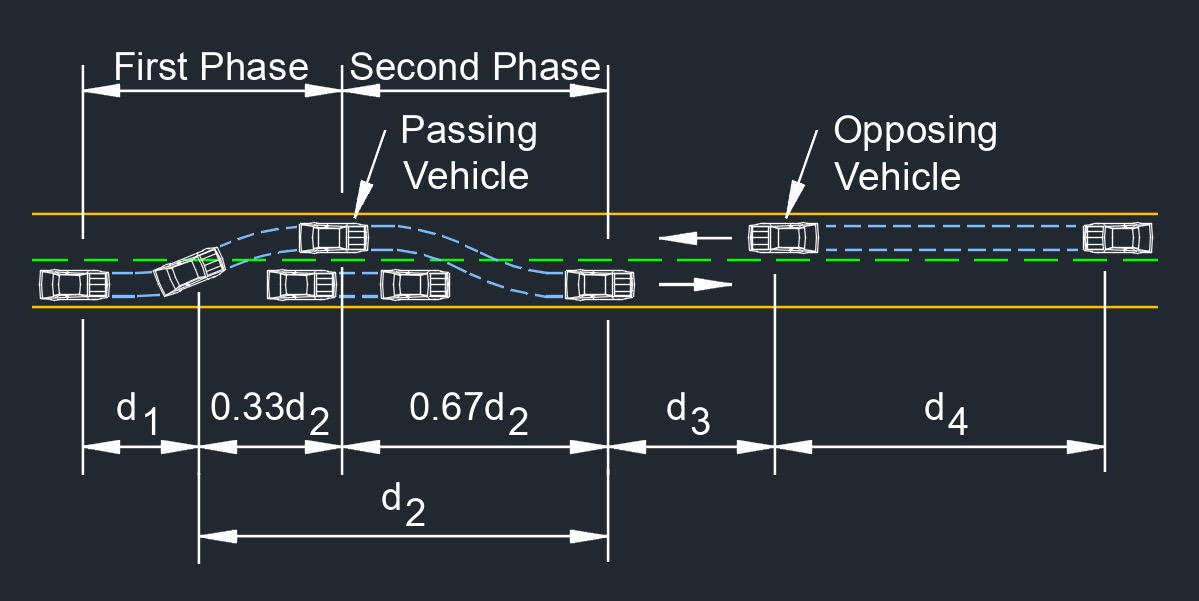Clearance Length
Clearance Length Formula |
||
| \( d_3 \;=\; 100 \; ft \;\;to\;\; 300 \; ft \) | ||
| Symbol | English | Metric |
| \( d_3 \) = clearance length | \( ft \) | \( m \) |
Clearance length, abbreviated as \(d_3\), is the space required for a highway vehicle to safely navigate various elements of the road network without colliding with obstacles, other vehicles, structures, or the road itself. It encompasses the dimensions and maneuverability of the vehicle as well as the design considerations of the road infrastructure.

Highway Vehicle Clearance Length Considerations
Intersections - Vehicles need sufficient clearance length to make turns without encroaching on other lanes or crossing into opposing traffic.Curves - Vehicles require clearance length to safely navigate curves without drifting into adjacent lanes or hitting the road's edge.
Tunnels and Overpasses - The clearance height of tunnels and overpasses must accommodate the height of the vehicles that will pass through them. Similarly, the width of tunnels and overpasses should provide adequate space for vehicle widths.
Lane Widths - Each lane on the highway should be wide enough to accommodate the width of standard vehicles and allow safe passing and lane changes.Shoulder Widths - Shoulders provide a buffer zone for vehicles to pull over safely. Adequate shoulder width is essential for emergency situations.
Median Widths - Medians provide separation between opposing traffic lanes. Sufficient median width is important to prevent collisions caused by vehicles crossing over.
Climbing Lanes and Passing Zones - Special lanes and zones designed for vehicles to pass slower moving traffic require sufficient clearance length to ensure safe merging and passing maneuvers.
Exit and Entrance Ramps - Vehicles need clearance length to safely merge onto or exit from highways without disrupting the flow of traffic.
Work Zones - Temporary lane closures or work zones need to provide sufficient clearance length to ensure safe passage of vehicles through the area.
Bridge Design - Bridges need to be designed to accommodate the weight and dimensions of various highway vehicles, including heavy trucks.
Highway designers and engineers use vehicle clearance length data to plan and design roadways that meet safety standards and provide efficient traffic flow. They consider the dimensions of different vehicle types, including passenger cars, trucks, buses, and emergency vehicles, to ensure that the highway infrastructure can accommodate the range of vehicles that will use it.

